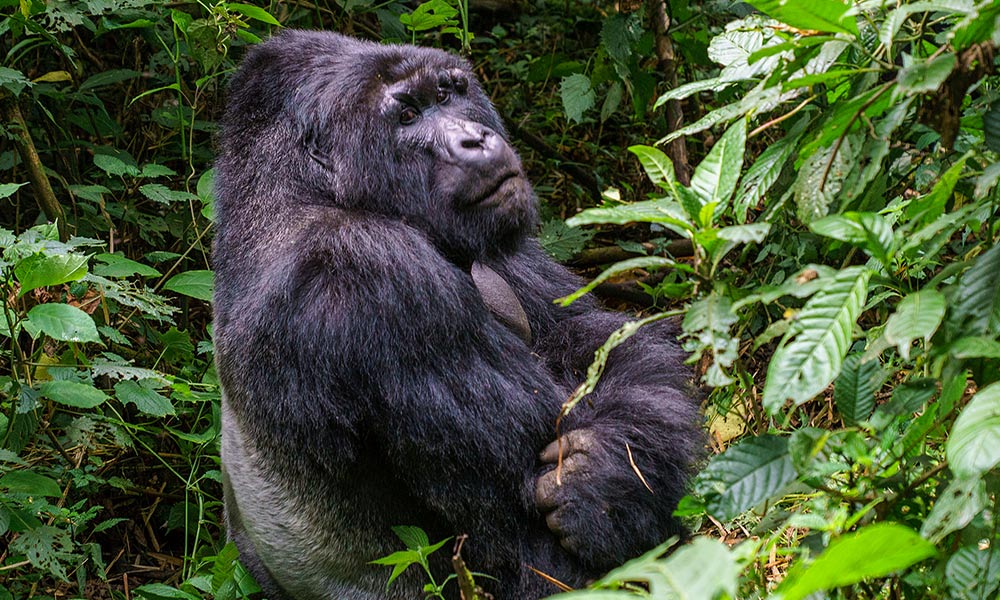The taxonomic order Carnivora is an interesting and varied one. All carnivores share the characteristic carnassial teeth, ideal for biting through flesh. The majority of carnivores eat meat, but there are some exceptions such as the civet which primarily follows an herbivorous diet, with the addition of some insects. Another common characteristic is the scapholunar bone in the foot, a fusion of the scaphoid, lunar and central bone which strengthens the foot making it more suitable for grappling and climbing activities.
Cheetah – Acinonyx jubatus
The champion sprinters of the bush, cheetahs are slender in appearance, weighing only 54Kg (males). The next time you are travelling by car along the motorway, take a moment to consider the fact that cheetahs can reach speeds of 70mph (112Kph)! They accelerate very fast, achieving a 0-60mph time of around 2 seconds – about the same time as a Formula 1 racing car.
They are generally quite successful hunters, being able to catch their prey 40% of the time. They try to get as close to the prey as possible before running after it to increase their chances of success, as they tire quickly when running at full speed.
Once they have caught their prey, they need to dine quickly as cheetahs are chased away from their kills by almost all the other bushveld predators, including lions, leopards, hyaenas, wild dog and occasionally even jackal if they’re feeling lucky. Some of the older, more experienced cheetahs have been known to leave the stomach lining of their kill intact, therefore preventing the other predators in the area from smelling the kill too easily.
Another interesting fact about cheetahs is that they have non-retractable claws, unlike their feline cousins. Cheetahs are not classed as dangerous game, since there have been no recorded cases of cheetahs killing humans. They are comparatively weak felines, and even baboons have been known to kill them.
Brown Hyaena – Parahyaena brunnea
Brown hyaena, as the name suggests, have a brown coat. They often appear more dog-like in appearance than their spotted cousins, and unlike the Spotted Hyaena, they do not hunt in packs but tend to hunt alone, although they will defend a kill site cooperatively. They are less common than their spotted cousins.
Wild Dog – Lycaon pictus
The African hunting dog or ‘wild dog’ is the most successful of all predators in the African bush. When hunting in groups they catch their prey 85% of the time. In appearance they look similar to domestic dogs, but they have much larger, rounder ears, a bushy tail, and only four toes. Their coats are usually mixed colours of black and browns.
Wild dogs were for a long time considered farmland pests and have been hunted to the brink of extinction. They are now an endangered species and there are several conservation projects working to re-establish their populations in the game reserves.
They are master hunters, chasing prey in large packs. They use a relay-race style of hunting, in that when the dogs at the front of the pack begin to tire, the dogs from the back will take over the lead. They chase their prey until it tires and no longer has the energy to escape. The dogs will then mob their victim. They can reach speeds of up to 44mph, and they have incredible stamina, often chasing prey for miles and sustaining constant speeds of up to 38mph. While cheetahs can be seen as the champion sprinters of the bush, the wild dogs are undoubtedly the champion long distance runners!
They are very sociable creatures and they have a supportive community whereby all the animals will assist in looking after the young. There is a dominant alpha male and alpha female of the pack that have sole breeding rights. Once prey has been caught and killed, the youngest dogs in the pack are allowed to eat first, with the elders only eating afterwards. They will also bring food back to the den and regurgitate this for the pups.
Black-backed Jackal – Canis mesomelas
Another member of the canine family, the Black-Backed Jackal may be encountered in the bush, particularly near to kill sites. They are small and fox-like in appearance, and while they are scavengers they will also hunt young antelopes, scrub hares, rodents, small reptiles and anything else that takes their fancy.
When scavenging, they will be quick to tuck into a carcass once the lions have finished with it, and before the hyaenas arrive. If hyaenas are already at the scene, the jackal will wait until they have gone, hoping that there is something left. As jackals are very fast movers, they often risk a quick bite of a kill when larger prey are still dining on it. After the jackal, the vultures will have their meal, and by the time they are finished, there is often no trace at all of the carcass. Nothing goes to waste in the bush!








